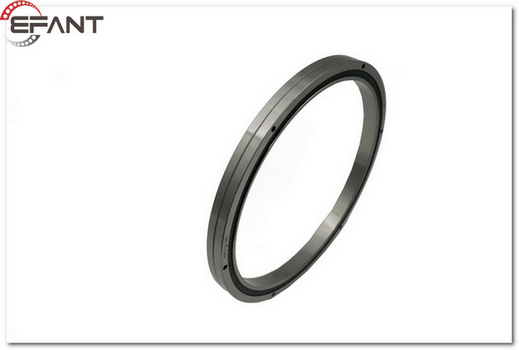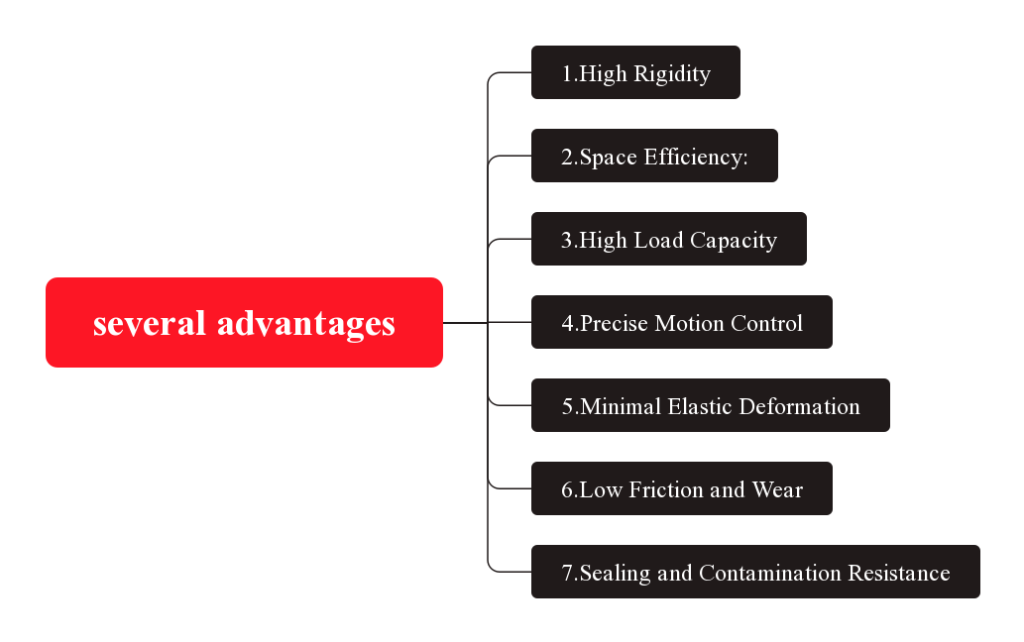

Cross roller bearings, also known as crossed roller bearings, are a type of radial roller bearings widely used in applications requiring high rigidity, precision, and load-carrying capacity. They are designed with cylindrical rollers arranged in a cross pattern between inner and outer raceways. The rollers are oriented at right angles to each other, with their axes intersecting at the bearing's center.
Cross roller bearings offer several advantages for industrial robots:

1.High Rigidity: Cross roller bearings are designed with crossed rollers arranged at a 90-degree angle to each other. This configuration provides high rigidity in multiple directions, allowing the robot to handle heavy loads and maintain stability during operation. The increased rigidity minimizes deflection and ensures precise positioning and repeatability.
2.Space Efficiency: Cross roller bearings have a compact design that allows for efficient use of space within the robot's structure. The crossed roller arrangement enables a large number of rollers to be packed into a small footprint, resulting in a high load-carrying capacity within a limited space.
3.High Load Capacity: Due to their unique structure, cross roller bearings can withstand both radial and axial loads simultaneously. The crossed arrangement of rollers distributes the load evenly, enhancing the bearing's load-carrying capacity. This capability is crucial for industrial robots that often handle heavy payloads and perform complex tasks.
4.Precise Motion Control: Cross roller bearings provide excellent rotational accuracy and smooth motion. The minimal rolling friction and optimized raceway design minimize torque fluctuations and ensure precise positioning control of the robot arm. This precision is crucial for tasks requiring high accuracy, such as pick-and-place operations, assembly, and machining.
5.Minimal Elastic Deformation: Cross roller bearings exhibit low elastic deformation under load. This characteristic is advantageous for applications where maintaining the positional accuracy of the robot is critical. The reduced elastic deformation minimizes the effects of backlash and hysteresis, contributing to better overall performance and repeatability.
6.Low Friction and Wear: The crossed roller design reduces the contact angle between the rollers and the raceways, resulting in lower friction and wear. This feature contributes to extended service life, reduced maintenance requirements, and improved operational efficiency of the robot.
7.Sealing and Contamination Resistance: Many cross roller bearings are available with integrated sealing features to protect the bearing from dust, debris, and other contaminants. This sealing helps to maintain the bearing's performance and extends its lifespan in harsh industrial environments.
Overall, the advantages of using cross roller bearings in industrial robots include high rigidity, compactness, high load capacity, precise motion control, minimal elastic deformation, low friction and wear, and sealing capabilities. These characteristics make cross roller bearings a preferred choice for demanding robotic applications that require accuracy, stability, and durability.
You can contact us if you have any requirements!
Jun-19-2023
Trade Shows&Event
What is the difference between cylindrical roller bearings and needle roller bearings More InformationJun-13-2023
Trade Shows&Event
What is the maintenance method for YRT rotary table bearings More InformationJun-12-2023
Trade Shows&Event
How to Identify the Quality of YRT Turntable Bearings More InformationSubmit Request